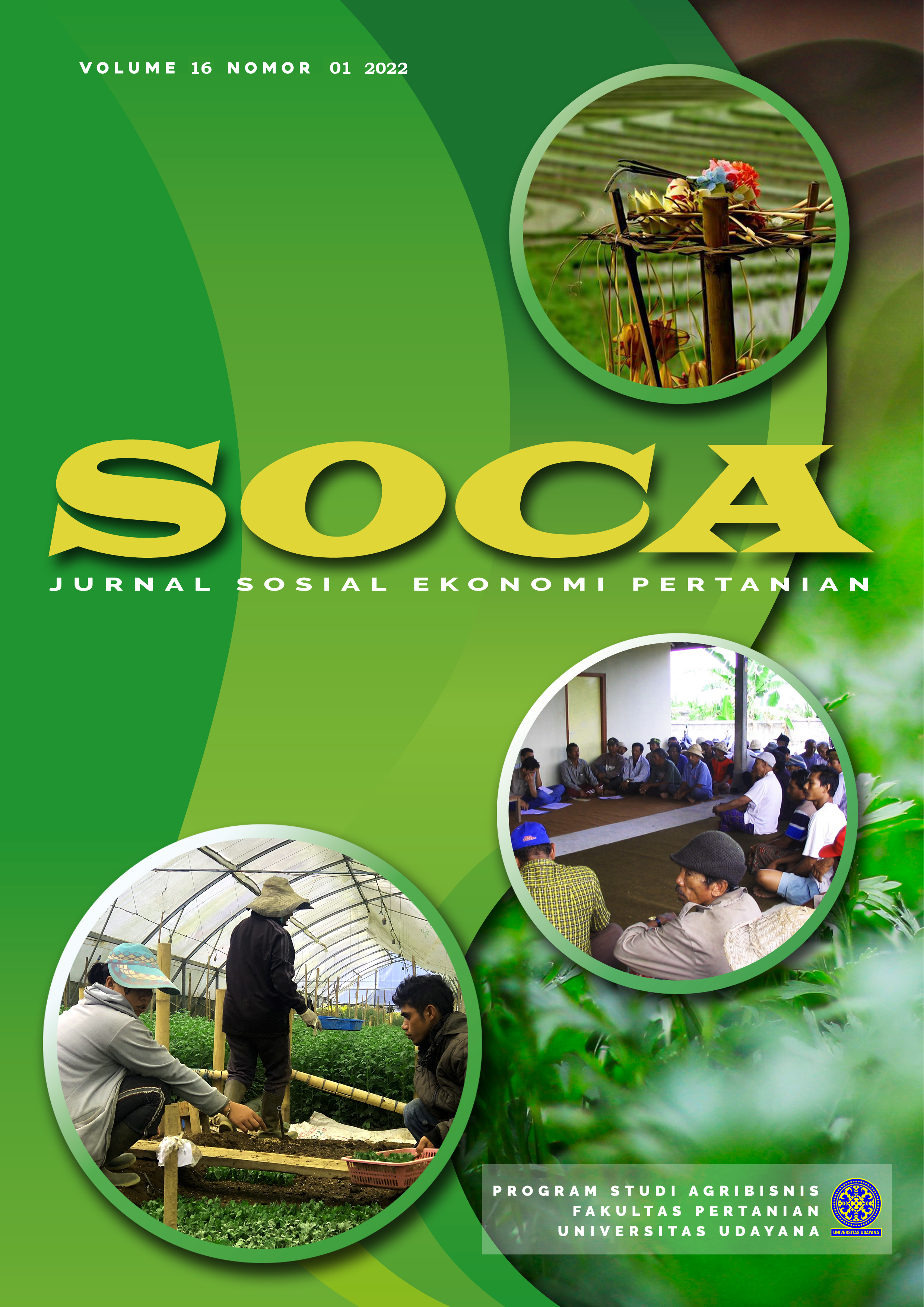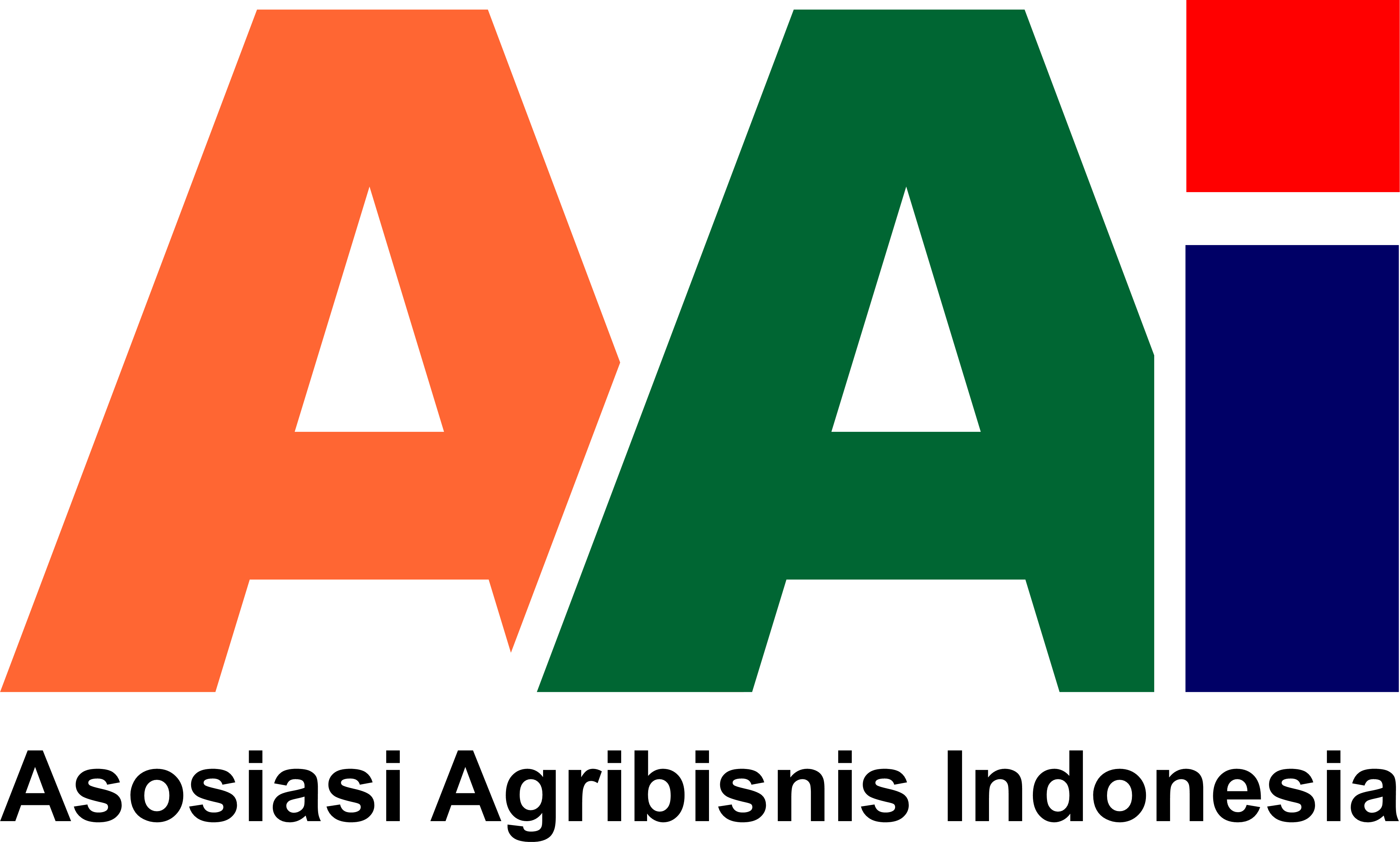Pricing Strategy for the Organic Eggs: Willingness to Pay and Hedonic Price Approaches
Abstract
Organic eggs have been marketed to provide safe food and protect the environment sustainability all at once. However, the high price is being an obstacle to expanding the organic egg market in East Java Province. The aims of this research were to analyze the factors that influence the willingness to pay (WTP) and hedonic prices of organic eggs and to formulate pricing strategies. This research was conducted by using an online survey method in East Java Province, Indonesia. The survey was conducted from May to July 2021. The obtained data were analyzed by using multinomial logistic, linear regression, and descriptive analysis. The results showed that 26.4% of consumers were willing to pay for organic eggs 10% more than the current price. The factor that influenced WTP was product quality. Meanwhile, the factors that influence the price were the eggs taste and the organic label. The results showed that market players of organic egg agribusiness still have the opportunity to increase the price of organic eggs. However, they must inform consumers about the health benefits of organic eggs and include them on the organic eggs label.
Downloads
References
Agovino, M., Crociata, A., Quaglione, D., Sacco, P., & Sarra, A. (2019). Good Taste Tastes Good. Cultural Capital as a Determinant of Organic Food Purchase by Italian Consumers: Evidence and Policy Implications. Ecological Economics, 141(2017), 66–75. https://doi.org/10.1016/j.ecolecon.2017.05.029
Aitken, R., Watkins, L., Williams, J., & Kean, A. (2020). The positive role of labelling on consumers’ perceived behavioural control and intention to purchase organic food. Journal of Cleaner Production, 255, 120334. https://doi.org/10.1016/j.jclepro.2020.120334
Ali, T., & Ali, J. (2020). Factors affecting the consumers’ willingness to pay for health and wellness food products. Journal of Agriculture and Food Research, 2(July), 100076. https://doi.org/10.1016/j.jafr.2020.100076
Antara, M., & Utari, A. A. O. (2008). Segmentasi Pasar Dan Penetapan Pasar Sasaran Pemasaran Udang Galah Desa Pering Kecamatan Blahbatuh Kabupaten Gianyar. SOCA: Socioeconomics of Agriculture and Agribusiness, 8(1), 1–19.
Aslihan Nasir, V., & Karakaya, F. (2014). Consumer segments in organic foods market. Journal of Consumer Marketing, 31(4), 263–277. https://doi.org/10.1108/JCM-01-2014-0845
Basha, M. B., & Lal, D. (2019). Indian consumers ’ attitudes towards purchasing organically produced foods : An empirical study. Journal of Cleaner Production, 215, 99–111. https://doi.org/10.1016/j.jclepro.2018.12.098
Budiyanto, M. A. K. (2014). Tipologi Preferensi Konsumen Terhadap Produk Pangan Organik Di Kota Malang. Jurnal Humanity, 7(2), 64–74.
Carfora, V., Cavallo, C., Caso, D., Del Giudice, T., De Devitiis, B., Viscecchia, R., Nardone, G., & Cicia, G. (2019). Explaining consumer purchase behavior for organic milk: Including trust and green self-identity within the theory of planned behavior. Food Quality and Preference, 76(September 2018), 1–9. https://doi.org/10.1016/j.foodqual.2019.03.006
Central Bureau of Statistics. (2021). Produksi Telur Ayam Petelur menurut Provinsi (Ton), 2018-2020. In Badan Pusat Statistik. https://bps.go.id/indicator/24/491/1/produksi-telur-ayam-petelur-menurut-provinsi.html
Chekima, B., Chekima, K., & Chekima, K. (2019). Understanding factors underlying actual consumption of organic food: The moderating effect of future orientation. Food Quality and Preference, 74, 49–58. https://doi.org/10.1016/j.foodqual.2018.12.010
De-Magistris, T., & Gracia, A. (2016). Consumers’ willingness-to-pay for sustainable food products: The case of organically and locally grown almonds in Spain. Journal of Cleaner Production, 118, 97–104. https://doi.org/10.1016/j.jclepro.2016.01.050
Ditlevsen, K., Denver, S., Christensen, T., & Lassen, J. (2020). A taste for locally produced food - Values, opinions and sociodemographic differences among ‘organic’ and ‘conventional’ consumers. Appetite, 147(November 2019), 104544. https://doi.org/10.1016/j.appet.2019.104544
Freytag-leyer, B., & Wijaya, Y. (2015). Consumers Intention and Perception of Buying Organic Food Products in Jakarta, Indonesia. Proceedings of the 2015 International Conference “Economid Science for Rural Development” No 40 Jelgava, LLU ESAF, April, 56–63. llufb.llu.lv/conference/.../Latvia_ESRD_40_2015-56-63.pdf
Funk, A., Sütterlin, B., & Siegrist, M. (2021). Consumer segmentation based on Stated environmentally-friendly behavior in the food domain. Sustainable Production and Consumption, 25, 173–186. https://doi.org/10.1016/j.spc.2020.08.010
Güney, O. I., & Giraldo, L. (2020). Consumers’ attitudes and willingness to pay for organic eggs: A discrete choice experiment study in Turkey. British Food Journal, 122(2), 678–692. https://doi.org/10.1108/BFJ-04-2019-0297
Hammershøj, M., & Steenfeldt, S. (2015). Organic egg production. II: The quality of organic eggs is influenced by hen genotype, diet and forage material analyzed by physical parameters, functional properties and sensory evaluation. Animal Feed Science and Technology, 208, 182–197. https://doi.org/10.1016/j.anifeedsci.2015.07.012
Jessica, Y., Cranfield, J., Chen, C., & Widowski, T. (2020). Heterogeneous informational and attitudinal impacts on consumer preferences for eggs from welfare enhanced cage systems. Food Policy, September, 101979. https://doi.org/10.1016/j.foodpol.2020.101979
Kantamaturapoj, K., & Marshall, A. (2020). Providing organic food to urban consumers: case studies of supermarkets in Bangkok and metropolitan area. Heliyon, 6, 2–9. https://doi.org/10.1016/j.heliyon.2020.e04003
Katt, F., & Meixner, O. (2020). Trends in Food Science & Technology A systematic review of drivers influencing consumer willingness to pay for organic food. Trends in Food Science & Technology, 100(July 2019), 374–388. https://doi.org/10.1016/j.tifs.2020.04.029
Krisno Budiyanto, M. A. (2012). Optimasi Pengembangan Kelembagaan Industri Pangan Organik Di Jawa Timur. Jurnal Teknik Industri, 12(2), 169. https://doi.org/10.22219/jtiumm.vol12.no2.169-176
Kushwah, S., Dhir, A., Sagar, M., & Gupta, B. (2019). Determinants of organic food consumption . A systematic literature review on motives and barriers. Appetite, 143(October 2018), 104402. https://doi.org/10.1016/j.appet.2019.104402
Kwak, C., & Clayton-Matthews, A. (2002). Multinomial logistic regression. Nursing Research, 51(6), 404–410. https://doi.org/10.1097/00006199-200211000-00009
Maichum, K., Parichatnon, S., & Peng, K. C. (2016). Application of the extended theory of planned behavior model to investigate purchase intention of green products among Thai consumers. Sustainability (Switzerland), 8(10), 1–20. https://doi.org/10.3390/su8101077
Mancini, P., Marchini, A., & Simeone, M. (2017). Which are the sustainable attributes affecting the real consumption behaviour? Consumer understanding and choices. British Food Journal, 119(8). https://doi.org/10.1108/BFJ-11-2016-0574
Mcfadden, J. R., & Huffman, W. E. (2017). Willingness-to-pay for natural, organic, and conventional foods: The effects of information and meaningful labels. Food Policy, 68, 214–232. https://doi.org/10.1016/j.foodpol.2017.02.007
My, N. H. D., Rutsaert, P., Loo, E. J. Van, & Verbeke, W. (2017). Consumers’ familiarity with and attitudes towards food quality certifications for rice and vegetables in Vietnam. Food Control, 82, 74–82. https://doi.org/10.1016/j.foodcont.2017.06.011
Pawlewicz, A. (2020). Change of price premiums trend for organic food products: The example of the polish egg market. Agriculture (Switzerland), 10(2), 14–18. https://doi.org/10.3390/agriculture10020035
Relawati, R., Ariadi, B. Y., Bakhtiar, A., & Minasyan, S. (2021). The changes of household food expense during COVID-19 pandemic: A case study in Indonesia and Armenia. SOCA: Journal of Socio-Economics of Agriculture and Agribusiness, 15(2), 416–426. https://doi.org/https://doi.org/10.24843/SOCA.2021.v15.i02.p16
Relawati, R., Ariadi, B. Y., & Harpowo. (2021). Customer’s behavior and willingness to pay for the antioxidant eggs. Psychology and Education, 58(1), 1302–1309. https://doi.org/10.17762/pae.v58i1.896
Relawati, R., Masyhuri, Waluyati, L. R., & Mulyo, J. H. (2017a). Attributes of local and imported fresh apples in Indonesia: A hedonic price approach based on consumer perspective. Pertanika Journal of Social Sciences and Humanities, 25(August). http://www.pertanika.upm.edu.my/pjssh/browse/special-issue?article=JSSH-S0625-2018
Relawati, R., Masyhuri, Waluyati, L. R., & Mulyo, J. H. (2017b). Consumers’ Awareness on Environment: A Study on Purchasing Behavior of Fresh Apple in East Java, Indonesia. 4th International Conference the Community Development in ASEAN, 582–590.
Singh, A., & Verma, P. (2017). Factors influencing Indian consumers’ actual buying behaviour towards organic food products. Journal of Cleaner Production, 167, 473–483. https://doi.org/10.1016/j.jclepro.2017.08.106
Skowron, S., & Szymoniuk, B. (2014). Marketing and sustainable development. Problemy Ekorozwoju - Problems of Sustainable Development, 9(2), 39–46. https://www.scopus.com/inward/record.uri?eid=2-s2.0-84903795123&partnerID=40&md5=cbee67b3bb686a501232a5067803ff98
Sokołowicz, Z., Dykiel, M., Krawczyk, J., & Augustyńska-Prejsnar, A. (2019). Effect of layer genotype on physical characteristics and nutritive value of organic eggs. CYTA - Journal of Food, 17(1), 11–19. https://doi.org/10.1080/19476337.2018.1541480
Szymoniuk, B., & Valtari, H. (2018). The REKO system in Finland: A new model of a sustainable marketing channel. Problemy Ekorozwoju - Problems of Sustainable Development, 13(2), 103–111. https://www.mendeley.com/catalogue/55897e69-55a1-3e73-ac92-63fa49692b54/
Tandon, A., Dhir, A., Kaur, P., Kushwah, S., & Salo, J. (2020). Why do people buy organic food? The moderating role of environmental concerns and trust. Journal of Retailing and Consumer Services, 57(July), 102247. https://doi.org/10.1016/j.jretconser.2020.102247
Tulong, M., Mongi, C., & Mananohas, M. (2018). Regresi Logistik Multinomial Untuk Menentukan Faktor-Faktor Yang Mempengaruhi Pilihan Perguruan Tinggi Pada Siswa SMA dan SMK di Pulau Karakelang Kabupaten Kepulauan Talaud. D’Cartesian, 7(2), 90–94. https://doi.org/10.35799/dc.7.2.2018.21456
Verain, M. C. D., Sijtsema, S. J., & Antonides, G. (2016). Consumer segmentation based on food-category attribute importance: The relation with healthiness and sustainability perceptions. Food Quality and Preference, 48, 99–106. https://doi.org/10.1016/j.foodqual.2015.08.012
Zhang, B., Fu, Z., Huang, J., Wang, J., & Xu, S. (2018). Consumers’ perceptions, purchase intention, and willingness to pay a premium price for safe vegetables: A case study of Beijing, China Conventional vegetable. Journal of Cleaner Production, 197, 1498–1507. https://doi.org/10.1016/j.jclepro.2018.06.273
Zhu, Q., Li, Y., Geng, Y., & Qi, Y. (2013). Green food consumption intention, behaviors and influencing factors among Chinese consumers. Food Quality and Preference, 28(1). https://doi.org/10.1016/j.foodqual.2012.10.005
Zou, L. W., & Chan, R. Y. K. (2019). Why and when do consumers perform green behaviors? An examination of regulatory focus and ethical ideology. Journal of Business Research, 94(April 2018), 113–127. https://doi.org/10.1016/j.jbusres.2018.04.006













